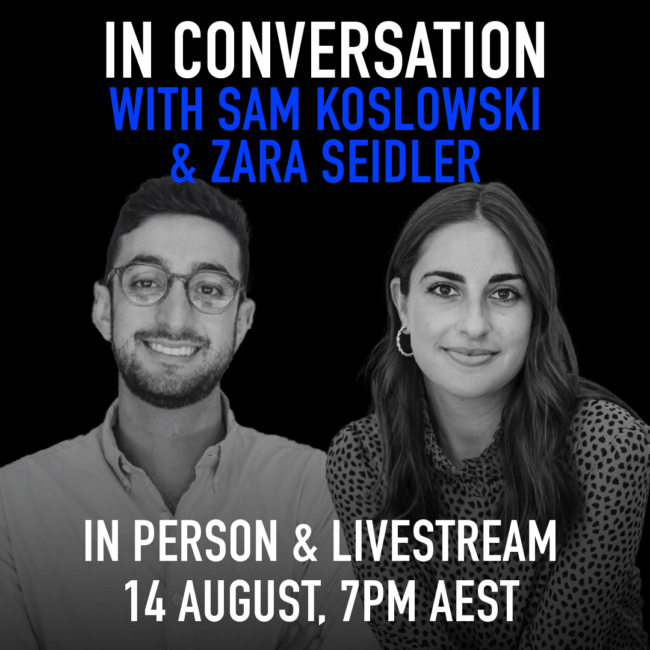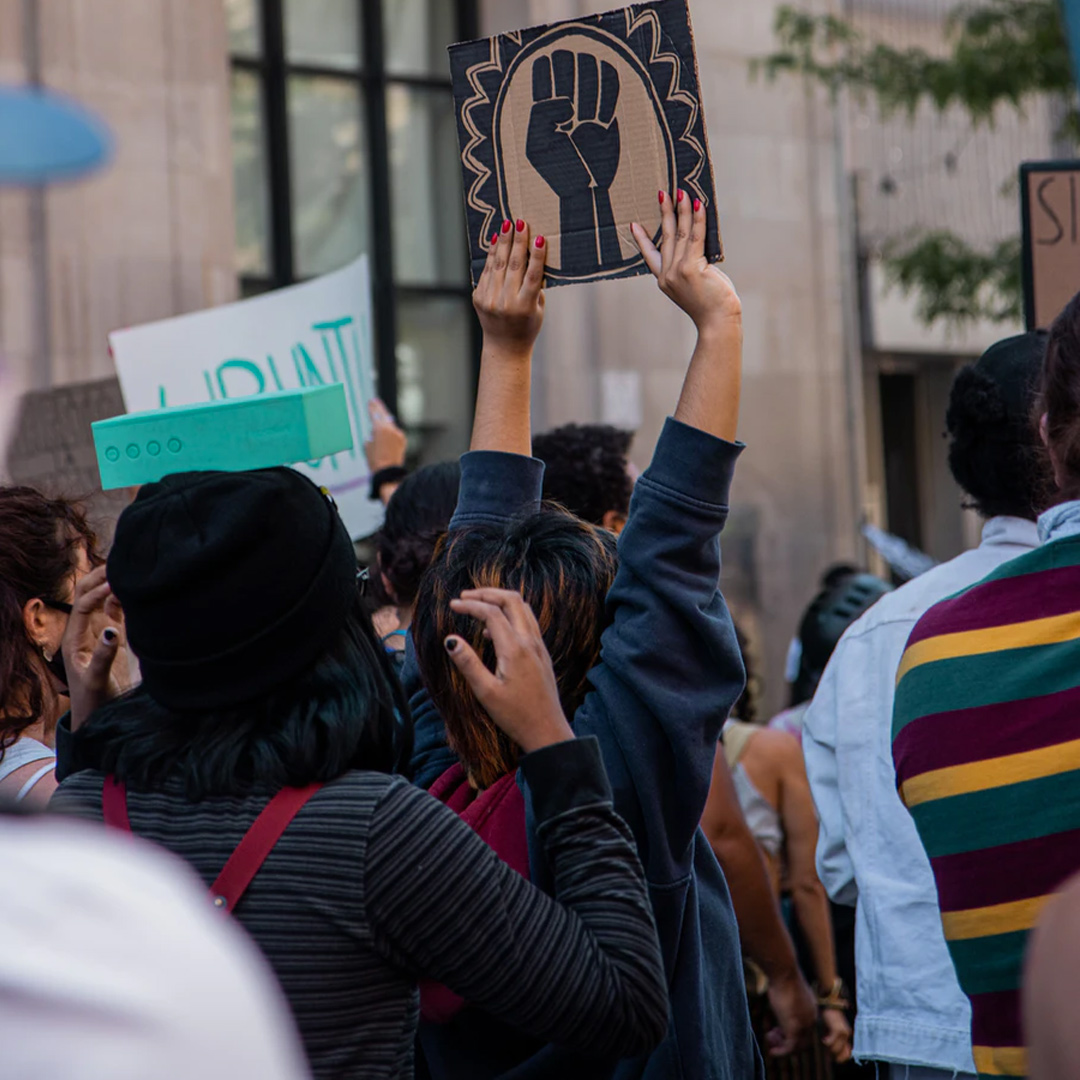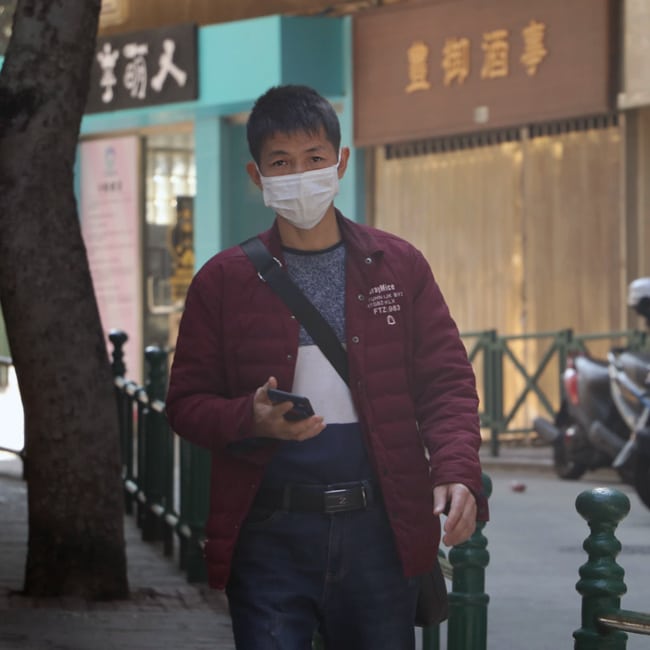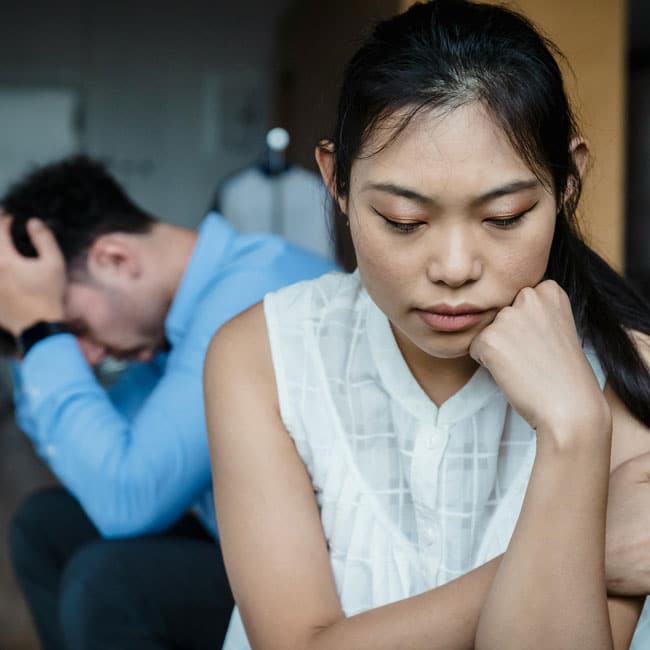(Roe)ing backwards: A seismic shift in women's rights

(Roe)ing backwards: A seismic shift in women’s rights
Opinion + AnalysisPolitics + Human Rights
BY Mehhma Malhi 4 JUL 2022
Standing in the middle of Washington Square Park in downtown Manhattan, on the 24th of June, I propelled a sign skyward that read: Abortion Is Healthcare. There were thousands of other slogans, on posters and placards, all being hoisted repeatedly by protesters equally aggrieved by the overturning of Roe v. Wade.
Earlier that same day, at 10 AM, the United States Supreme Court had overturned the ruling of the original monumental case. Since 1973, Roe v. Wade had protected the constitutional right to privacy for nearly half a century – ensuring that every woman in the US could obtain an abortion without fear of criminal penalty. But the repeal of this landmark case has unfortunately handed the regulation of abortion back to each individual state. And now, approximately 20 US states are set to once again criminalise or entirely outlaw access to abortions, despite two-thirds of its citizens being in favour of abortion.
So how will this loss of privacy constrain women’s autonomy?
The right to an abortion protects women from bodily harm, insecure financial circumstances, and emotional grief. The medical procedure allows a woman to maintain bodily autonomy by affording the choice to decide when, or if, she ever wants a child. Abortion acknowledges a woman’s right to live life as she intends. Banning abortion severely compromises that choice. Further, it does not reduce abortion rates but instead forces women to seek abortion elsewhere or by unsafe means. In 2020, over 900 000 legal abortions were conducted in the United States by professionals or by mothers using medication prescribed by physicians.
Banning abortion places a hefty burden on women, suppressing their autonomy.
The Legal Disparity Pre-Roe
Before Roe, women in the United States had minimal access to legal abortions, which were usually only available to high-income families. Illegal abortions were unsafe and in 1930 were the cause of nearly 20% of maternal deaths. This is because many of them relied on self-induced abortions or asked community members for assistance. Given the lack of medical experience, botched procedures and infections were rife.
Pre-Roe abortion bans harmed and further disadvantaged predominantly low-income women and women of colour. In 1970 some states allowed abortion. However, given the lack of national support, women were expected to travel long distances for many hours, which placed their health at significant risk. Once again, this limited access created unequal outcomes by only providing access to select women with means to travel and financial security.
Post-Roe Injustice
Post-Roe, the outcomes appear just as grim. In a digital landscape, technology brings benefits but also comes at a cost, introducing new vulnerabilities and concerns for women. While technology equips women seeking abortion to find clinics, book appointments, and help with travel interstate, it can also amplify the persecution of women when abortion is criminalised. For example, in 2017, Mississippi prosecutors used a woman’s internet search history to prove that she had looked up where to find abortion pills before she lost her foetus. And currently, since the recent ruling, clinics are scrambling to encrypt their data, while others are resorting to using paper to protect their patients’ sensitive information from being tracked or leaked
Unfortunately, there are also concerns that data could be used from period tracking apps and location services to further restrict women from accessing abortions. In previous years, prosecutors and law enforcement have wrongfully convicted women for illegal abortions by searching their online history and text messages with friends. Now that abortion is criminalised in some states, there are worries of increased access to private information that could be used against women in court: specifically the use of third-party apps that sell information which would further isolate women and reduce their ability to receive competent care, which in some states could be accessed without their consent.
The United States Department of Health and Human Services, known as HHS, released a statement on June 29th about protecting patient privacy for reproductive health. It states that “disclosures to law enforcement officials, are permitted only in narrow circumstances” and that in most cases, the Health Insurance and Portability and Accountability Act (HIPAA), commonly known as a privacy Act, “does not protect the privacy or security of individuals’ health information” when stored on phones. The guidance continues by suggesting how women can best protect their online information. For women to defend themselves, they must take extra precautions such as using privacy browsers, turning off locations, and using different emails.
These additional measures are troubling as they stipulate how women receive care. Placing the onus on women, the risk of information leaking limits access to resources and further restricts the privacy and autonomy of pregnant women as it creates fear of constant surveillance.
Further, it places people seeking care at a significant disadvantage if they do not know what information is protected and what is not.
Post-Roe, the medical landscape will also begin to shift. Abortion care is not uncommon in other procedures conducted by obstetricians and gynaecologists (OB-GYNs). Abortion care can overlap with miscarriage aftercare and ectopic pregnancies, creating murky circumstances for physicians and delaying care for patients as they wait for legal advice and opinion. In other cases, abortion care is necessary when pregnant women have cancer and need to terminate the pregnancy to continue with chemotherapy.
By restricting abortions, many physicians will be unable to provide adequate care and fulfil their duty to patients as they will be restricted by governing laws which will hinder further practice if persecuted. Any delay in receiving an abortion is an act of maleficence, as the windows to receive abortions grow increasingly slim and the restrictions grow tighter, the process inhibits providers from treating women seeking an abortion which obstructs beneficent care. As a result, many women will lose their lives from preventable and treatable causes.
Criminalising abortion will warp access and create unnavigable procedural labyrinths that will change the digital and medical landscape. Post-Roe United States will continue to breed fear and control over women’s lives. Criminalising abortion will isolate women from their communities and obstruct them from receiving competent medical care and treatment. Banning abortions will place an undue burden on women and will unfairly jeopardise their health and right to access care.
Ethics in your inbox.
Get the latest inspiration, intelligence, events & more.
By signing up you agree to our privacy policy
You might be interested in…
Opinion + Analysis
Politics + Human Rights
We are witnessing just how fragile liberal democracy is – it’s up to us to strengthen its foundations
Explainer
Business + Leadership, Politics + Human Rights
Ethics Explainer: Universal Basic Income
Opinion + Analysis
Politics + Human Rights, Relationships, Society + Culture
The sticky ethics of protests in a pandemic
Opinion + Analysis
Health + Wellbeing, Politics + Human Rights
Constructing an ethical healthcare system
BY Mehhma Malhi
Mehhma recently graduated from NYU having majored in Philosophy and minoring in Politics, Bioethics, and Art. She is now continuing her study at Columbia University and pursuing a Masters of Science in Bioethics. She is interested in refocusing the news to discuss why and how people form their personal opinions.
To see no longer means to believe: The harms and benefits of deepfake

To see no longer means to believe: The harms and benefits of deepfake
Opinion + AnalysisRelationshipsScience + Technology
BY Mehhma Malhi 18 FEB 2022
The use of deepfake technology is increasing as more companies devise different models.
It is a form of technology where a user can upload an image and synthetically augment a video of a real person or create a picture of a fake person. Many people have raised concerns about the harmful possibilities of these technologies. Yet, the notion of deception that is at the core of this technology is not entirely new. History is filled with examples of fraud, identity theft, and counterfeit artworks, all of which are based on imitation or assuming a person’s likeliness.
In 1846, the oldest gallery in the US, The Knoedler, opened its doors. By supplying art to some of the most famous galleries and collectors worldwide, it gained recognition as a trusted source of expensive artwork – such as Rothko’s and Pollock’s. However, unlike many other galleries, The Knoedler allowed citizens to purchase the art pieces on display. Shockingly, in 2009, Ann Freedman, who had been appointed as the gallery director a decade prior, was famously prosecuted for knowingly selling fake artworks. After several buyers sought authentication and valuation of their purchases for insurance purposes, the forgeries came to light. The scandal was sensational, not only because of the sheer number of artworks involved in the deception that lasted years but also because millions of dollars were scammed from New York’s elite.
The grandiose art foundation of NYC fell as the gallery lost its credibility and eventually shut down. Despite being exact replicas and almost indistinguishable, the understanding of the artist and the meaning of the artworks were lost due to the lack of emotion and originality. As a result, all the artworks lost sentimental and monetary value.
Yet, this betrayal is not as immoral as stealing someone’s identity or engaging in fraud by forging someone’s signature. Unlike artwork, when someone’s identity is stolen, the person who has taken the identity has the power to define how the other person is perceived. For example, catfishing online allows a person to misrepresent not only themselves but also the person’s identity that they are using to catfish with. This is because they ascribe specific values and activities to a person’s being and change how they are represented online.
Similarly, deepfakes allow people to create entirely fictional personas or take the likeness of a person and distort how they represent themselves online. Online self-representations are already augmented to some degree by the person. For instance, most individuals on Instagram present a highly curated version of themselves that is tailored specifically to garner attention and draw particular opinions.
But, when that persona is out of the person’s control, it can spur rumours that become embedded as fact due to the nature of the internet. An example is that of celebrity tabloids. Celebrities’ love lives are continually speculated about, and often these rumours are spread and cemented until the celebrity comes out themselves to deny the claims. Even then, the story has, to some degree, impacted their reputation as those tabloids will not be removed from the internet.
The importance of a person maintaining control of their online image is paramount as it ensures their autonomy and ability to consent. When deepfakes are created of an existing person, it takes control of those tenets.
Before delving further into the ethical concerns, understanding how this technology is developed may shed light on some of the issues that arise from such a technology.
The technology is derived from deep learning, a type of artificial intelligence based on neural networks. Deep neural network technologies are often composed of layers based on input/output features. It is created using two sets of algorithms known as the generator and discriminator. The former creates fake content, and the latter must determine the authenticity of the materials. Each time it is correct, it feeds information back to the generator to improve the system. In short, if it determines whether the image is real correctly, the input receives a greater weighting. Together this process is known as generative adversarial network (GAN). It uses the process to recognise patterns which can then be compiled to make fake images.
With this type of model, if the discriminator is overly sensitive, it will provide no feedback to the generator to develop improvements. If the generator provides an image that is too realistic, the discriminator can get stuck in a loop. However, in addition to the technical difficulties, there are several serious ethical concerns that it gives rise to.
Firstly, there have been concerns regarding political safety and women’s safety. Deepfake technology has advanced to the extent that it can create multiple photos compiled into a video. At first, this seemed harmless as many early adopters began using this technology in 2019 to make videos of politicians and celebrities singing along to funny videos. However, this technology has also been used to create videos of politicians saying provocative things.
Unlike, photoshop and other editing apps that require a lot of skill or time to augment images, deepfake technology is much more straightforward as it is attuned to mimicking the person’s voice and actions. Coupling the precision of the technology to develop realistic images and the vast entity that we call the internet, these videos are at risk of entering echo chambers and epistemic bubbles where people may not know that these videos are fake. Therefore, one primary concern regarding deepfake videos is that they can be used to assert or consolidate dangerous thinking.
These tools could be used to edit photos or create videos that damage a person’s online reputation, and although they may be refuted or proved as not real, the images and effects will remain. Recently, countries such as the UK have been demanding the implementation of legislation that limits deepfake technology and violence against women. Specifically, there is a slew of apps that “nudify” any individual, and they have been used predominantly against women. All that is required of users is to upload an image of a person. One version of this website gained over 35 million hits over a few days. The use of deepfake in this manner creates non-consensual pornography that can be used to manipulate women. Because of this, the UK has called for stronger criminal laws for harassment and assault. As people’s main image continues to merge with technology, the importance of regulating these types of technology is paramount to protect individuals. Parameters are increasingly pertinent as people’s reality merges with the virtual world.
However, like with any piece of technology, there are also positive uses. For example, Deepfake technology can be used in medicine and education systems by creating learning tools and can also be used as an accessibility feature within technology. In particular, the technology can recreate persons in history and can be used in gaming and the arts. In more detail, the technology can be used to render fake patients whose data can be used in research. This protects patient information and autonomy while still providing researchers with relevant data. Further, deepfake tech has been used in marketing to help small businesses promote their products by partnering them with celebrities.
Deepfake technology was used by academics but popularised by online forums. Not used to benefit people initially, it was first used to visualise how certain celebrities would look in compromising positions. The actual benefits derived from deepfake technology were only conceptualised by different tech groups after the basis for the technology had been developed.
The conception of such technology often comes to fruition due to a developer’s will and, given the lack of regulation, is often implemented online.
While there are extensive benefits to such technology, there need to be stricter regulations, and people who abuse the scope of technology ought to be held accountable. As we see our present reality merge with virtual spaces, a person’s online presence will continue to grow in importance. Stronger regulations must be put into place to protect people’s online persona.
While users should be held accountable for manipulating and stripping away the autonomy of individuals by using their likeness, more specifically, developers must be held responsible for using their knowledge to develop an app using deepfake technology that actively harms.
To avoid a fallout like Knoedler, where distrust, skepticism, and hesitancy rooted itself in the art community, we must alert individuals when deepfake technology is employed; even in cases where the use is positive, be transparent that it has been used. Some websites teach users how to differentiate between real and fake, and some that process images to determine their validity.
Overall, this technology can help individuals gain agency; however, it can also limit another persons’ right to autonomy and privacy. This type of AI brings unique awareness to the need for balance in technology.
Ethics in your inbox.
Get the latest inspiration, intelligence, events & more.
By signing up you agree to our privacy policy
You might be interested in…
WATCH
Relationships
Deontology
WATCH
Business + Leadership, Climate + Environment, Science + Technology
How to build good technology
Opinion + Analysis
Health + Wellbeing, Relationships
5 ethical life hacks
Explainer
Relationships
Ethics Explainer: Double-Effect Theory
BY Mehhma Malhi
Mehhma recently graduated from NYU having majored in Philosophy and minoring in Politics, Bioethics, and Art. She is now continuing her study at Columbia University and pursuing a Masters of Science in Bioethics. She is interested in refocusing the news to discuss why and how people form their personal opinions.
Did Australia’s lockdown leave certain parts of the population vulnerable?

Did Australia’s lockdown leave certain parts of the population vulnerable?
Opinion + AnalysisPolitics + Human Rights
BY Mehhma Malhi 3 DEC 2021
The pandemic has increased the duty we have to other members of our communities.
Different groups of people have different interests, but balancing these interests can cause conflict and friction.
Given Australia’s hard lockdown stance, many people could not wait to lift the restrictions and return to their daily routines. However, in relieving people from these restrictions, we also leave vulnerable populations exposed.
Who do we have a more significant duty towards?
There were discussions around school kids and their right to access education, conversations about teen and adult mental health, and calls to vaccinate the elderly. However, a group that was affected by all these considerations and needed further contemplation was ignored – those with disabilities.
While we are interested in protecting all people, if we do not ensure the safety of the most vulnerable in a population, we fail – we blatantly show that we do not value their needs in conjunction with evaluating a safe society.
The Ethics Centre’s Dr. Simon Longstaff stated recently on Q&A that ‘it is unforgivable that we have to have this conversation … where the most vulnerable members of our community have been left exposed. We should not … expect those people with … vulnerabilities to bear the burden of what we would prefer to do.’
While mental health costs of lockdowns are in favour of opening, Dr. Longstaff warned that ‘we as a society are going to have to accept that those who become infected and die will be something we have to wear on our own conscience.’
Phase 1A of Australia’s vaccine rollout, was initiated in February with the intention of targeting essential healthcare workers and those most vulnerable, such as the elderly and those with disabilities. However, in June only 1 in 5 people with a disability had been vaccinated, and less than 50% of support workers had received both doses of a vaccine. Yet, there was a dramatic increase in October to 70% of individuals being vaccinated.
The marked uptake was likely due to lockdown measures being lifted, as many people wanted the vaccine but could not receive it due to lack of accessibility.
In order to receive a vaccination, people had to contact their GP or later on could book one online.
On the face of it, these distribution procedures seem reasonable but there were significant problems that severely limited access. Having to make a GP appointment simply to obtain a vaccination referral was an unnecessary step that made it particularly difficult for those with disabilities, many of whom are dependent upon others to assist them.
Further, despite being a part of Phase 1A, many people with a disability could not receive the vaccine until lockdown had been lifted and support networks were reinstated. There was no follow-up, reassurance, or support to ensure that those who wanted to receive the vaccine could promptly do so. Therefore, as vaccine distribution moved from one phase to the next, it left an increasing number of those with disabilities behind.
Secondly, for similar reasons, internet access is more difficult for many of those with disabilities and the Department of Health website was not particularly user-friendly. It did not include larger, more legible text or have text to speech which would have helped those with limited sight or those who have trouble reading. Additionally, the high demand for vaccination meant that timeslots were severely limited and if they were available, they were usually inconvenient.
This was especially problematic for those with disabilities because it was not always clear which facilities were equipped with accessible features. To obtain informed consent, centres would need to have staff who are able to understand sign-language and provide information leaflets in braille. Much of this burden of providing additional support and care fell on already stretched family members and carers who, because of lockdown, may already have been working from home and home-schooling children.
What should Australia have done?
First and foremost, the relevant authorities should have ensured that almost 90%+ of each phase was vaccinated before moving to the next phase. In doing so, they would have needed to provide adequate support for those in Phase 1A and set up additional measures as required.
- Vaccine facilities should have been situated close to care facilities.
- Carers and parents should have been able to book their vaccines with individuals.
- Vaccine facilities ought to have implemented “safe” times or locations whereby those with disabilities could show up with no appointment.
What is perhaps irreconcilable is that while these requests/services were prepared during the pandemic, they were simply unavailable due to lack of federal organisation. There are many hospitals around Australia that have rehabilitation medical departments, all of which have specialised members and facilities. Despite notifying the government that they have experience and the equipment to convert into vaccination sites for those living with disabilities, they were not used.
The distribution of the vaccine in Australia was not organised in a manner that was empathetic to individuals living with a disability. I agree with the Royal Commission and Dr Longstaff that ending lockdown and opening without first ensuring high vaccination rates in this vulnerable community was unconscionable and unforgivable.
The lockdown was organised in a manner that did not respect the needs of particular populations. It once again highlights the inequity that people with disabilities face and places the responsibility of any harm to these individuals squarely on society. It was our duty to protect one another from harm during the pandemic, and we have failed a significant group within Australia’s population.
Ethics in your inbox.
Get the latest inspiration, intelligence, events & more.
By signing up you agree to our privacy policy
You might be interested in…
Reports
Politics + Human Rights
The Cloven Giant: Reclaiming Intrinsic Dignity
Opinion + Analysis, READ
Politics + Human Rights
How to find moral clarity in Gaza
Opinion + Analysis
Politics + Human Rights, Relationships, Society + Culture
Of what does the machine dream? The Wire and collectivism
Opinion + Analysis
Politics + Human Rights
Is the right to die about rights or consequences?
BY Mehhma Malhi
Mehhma recently graduated from NYU having majored in Philosophy and minoring in Politics, Bioethics, and Art. She is now continuing her study at Columbia University and pursuing a Masters of Science in Bioethics. She is interested in refocusing the news to discuss why and how people form their personal opinions.
Power and the social network

In science, power has a very precise definition. It is the rate at which energy is being transferred – a relationship that is captured in a formula and can be thought of more informally as the amount of “work” being done.
So, in a scientific context – specifically physics, the meaning of power is clear. In contrast, power is a far more complex concept in social sciences – as revealed within a diverse range of human interactions.
There are two prevailing views on the nature of power. The first regards power predominantly as a tool for subjugation, while the second acknowledges its potential for harmful use while also pointing to its potential role in maintaining balance.
Thomas Hobbes championed the first notion, conceptualising one man’s gain in power as another man’s loss. A straightforward illustration of this can be seen in a wrestling match where two people compete, with one eventually winning. That outcome is incompatible with both having equal power. Even if they do so initially, a relative increase in power eventually accrues to the victor.
The second perspective on power is provided by Michel Foucault, who considered its nature to be more subtle and varied. He proposed that power assumes many forms and is invested in many things. This latent power only arises when an individual engages in conversation around ‘regimes of truth’ or understanding. Foucault’s definition of power is thus more charitable. He thinks of power as an entity that resides in all things rather than a structure through which people/things can mobilise control. He notes that power is synonymous with knowledge and fact.
In older structures, such as government and politics, it’s challenging for an individual to lose power entirely. A benefit of having power is that can enhance the credibility and longevity of a person’s philosophy. Even though someone may lose their position and ability to make decisions in government, they often retain their power to exercise influence within their social circles provided their personal credibility remains intact. This is how ‘informal’ power (influence) can shape the exercise of formal power.
This permanence of power is an important determinant of the behaviour of those in power. Confidence in the enduring nature of power (and its ability to ward off adverse consequences) often leads the powerful to make choices that advance their personal interests.
Social media has begun to redefine the nature of power. The dominant platforms have gained tremendous traction over the past decade, and gradually personal identity has become synonymous with online presence. Widespread fame and the attainment of a quasi-celebrity status has given key ‘influencers’ the ability to exercise ‘informal’ (but none the less real) power through the vector of their online followers. But social media fame is even more fickle than that gained through traditional means as its basis is intrinsically unpredictable.
As such, social media provides some useful insights into the new dynamics of power within a technological setting. For example, in the case of social media, power is actually being exercised by those who offer a response to what ‘influencers’ post. When you use social media, you use and direct your power through likes and comments offered in response to what has been posted. However, if you disapprove of something you’ve observed, you can withhold your endorsement or even actively express your disdain through dislikes and critical comments – in other words actively withdrawing your support can be part of a conscious act to diminish the power. So, where does power lie? With the influencers or their potentially fickle followers?
The technology that underpins social media platforms has also ‘democratised’ power in that almost anyone can gain a following and thus have the potential to exert a degree of influence.
It’s much easier now to establish a position of power online than it was traditionally – because of ease of access and the fact that there is no limit to the number of people who can have a platform and broadcast their views widely.
But this increase in access to power is a double-edged sword because, as quick as it is for someone to gain power through today’s media, they can just as easily lose it.
As a result, many ‘celebrities’ have short-lived fame. The fleeting nature of power has extended beyond the realm of social media into the offline world. For example, the twenty-four-hour media cycle and the need to feed an insatiable media ‘beast’ means that politicians now operate under an intense and unceasing public gaze. Even the slightest whiff of scandal can end a career – and end access to a formal source of power.
In modern societies, scrutiny drives and confers power by facilitating influence.
Online power is probably best conceptualised as a mixture of Foucault’s and Hobbes’ descriptions of power.
Overall, we see how our old structures of power perhaps do not adapt easily to the online world. The reachability and balance of the internet make it easier to comment on those in power and hold them accountable for their actions. Ultimately, the dynamic is shifting; while the factors that give people power – influence, connection, and money – remain prevalent on the internet, the power they generate is no longer as enduring.
Ethics in your inbox.
Get the latest inspiration, intelligence, events & more.
By signing up you agree to our privacy policy
You might be interested in…
Opinion + Analysis
Relationships
Parenting philosophy: Stop praising mediocrity
Opinion + Analysis
Health + Wellbeing, Politics + Human Rights, Relationships
CoronaVirus reveals our sinophobic underbelly
Opinion + Analysis
Health + Wellbeing, Relationships
Living well or comfortably waiting to die?
Opinion + Analysis
Relationships
We shouldn’t assume bad intent from those we disagree with
BY Mehhma Malhi
Mehhma recently graduated from NYU having majored in Philosophy and minoring in Politics, Bioethics, and Art. She is now continuing her study at Columbia University and pursuing a Masters of Science in Bioethics. She is interested in refocusing the news to discuss why and how people form their personal opinions.
Paralympian pay vs. Olympian pay

Paralympian pay vs. Olympian pay
Opinion + AnalysisRelationships
BY Mehhma Malhi The Ethics Centre 27 SEP 2021
Recently, the Australian Prime Minister, Scott Morrison, announced that Paralympians will be paid the same bonuses as Olympians.
Specifically, medalists that win gold will receive a $20,000 bonus, and those that win a silver or bronze will get $15,000, and $10,000 respectively. Remarkably, prior to this announcement Paralympians received no payment whatsoever for representing their country and for their incredible efforts.
In his speech, Morrison noted that the Paralympic team won a phenomenal 60 medals and described this achievement as having “national significance.” It appears that the exceptional performance of our Paralympians has prompted this change to the funding model. But while this is a welcome development and clearly a step in the right direction, the reasons for this shift in thinking and change in policy warrant further consideration.
Firstly, it seems unfair and perhaps reductive to award the Paralympic team equal compensation only if they perform exceptionally as a collective. The team only garnered support for its campaign because it won a large number of medals that surpassed the collective achievements of our Olympians. One can’t help wondering had they not done so well would the Government have recognised their achievements and made this change?
On the other hand, this cannot be the only reason for the change in position as no such bonuses were considered in 2016 when Paralympians won even more medals – 81 in total. Therefore, perhaps the decision reflects more the thinking of the incumbent government instead of a more pervasive bias?
Either way, it is evident that such stark differences in pay partly occur because of deep-seated discrimination and that in reality individuals in minority groups have to go the extra mile to ‘prove’ their worth. Additionally, whilst our Olympians and Paralympians compete for their country, there is an explicit recognition that their individual efforts are partly compensated by the monetary award. The lack of payment undermines this.
Curiously, the Australian Government sets aside more than $50 million for high-performance grants that support both Olympians and Paralympians. But the fact that this budget is shared makes it even harder to comprehend why it has taken so long to recognise this disparity and attempt to correct it. However, leaving aside for a moment the reasons why this has occurred, let’s consider what makes this form of pay discrimination inequitable from an ethical perspective. Broadly, there are two main reasons.
First, the pay bonus is not an additional sum of money that athletes receive on top of their salary. Instead, it is usually their primary source of income. In other words, it is not a bonus at all, and athletes that don’t receive any such grants or awards must rely heavily on family support or sponsorships following sporting events to sustain themselves. Therefore, in addition to being an ‘award’ that serves the purpose of providing open acknowledgement of achievement, the bonus is in fact a monetary necessity. Therefore, for Australia to preferentially award athletes competing in the Olympics suggests that Paralympians are regarded less favourably and may in some way be considered as less worthy.
If the difference arose purely due to insufficient funds and a limited budget, then the most equitable approach would be to share the bonuses and split them equally between the two groups of athletes. But this has clearly not been the stance adopted to date.
Instead, the bonuses are a clear example of pay discrimination and the marked inequity denies the Paralympians what they rightly deserve. After all, the Paralympians train and work just as hard as Olympians. Furthermore, finding appropriate training facilities and resources for athletes with disabilities is far more challenging and costly than it is for those without any limitations. Places with the necessary specialised equipment and ease of access are scarce. And so, if anything, the budget for the Paralympic committee should be larger not smaller.
Further, Paralympic athletes are subject to pay discrimination as they are denied chances to receive sponsorships. There ought to be additional enhancements put in place to ensure the success of Paralympians. Traditionally, the Paralympics have been broadcast at odd hours and the advertising leading up to them is comparatively modest. This is in part driven by a lack of advertising and compounded by broadcasting schedules and limited Paralympian visibility. This means that sponsors are less likely to partner with Paralympians and the majority never receive lucrative sponsorships that would not only help the promotion of them as a brand but also contribute directly and meaningfully to their finances.
For all these reasons, it is necessary that the government, advertising agencies, and Paralympic and Olympic committees examine these issues and devise means of alleviating the financial stress placed upon athletes. Currently, athletes who want to compete and succeed in their sports have no choice but to accept rewards that are below par. The most important reason however, as to why these issues need to be addressed is that the differential treatment of Paralympians perhaps undermines the core tenet of amateur sport – that competition should fair and open to everyone equally.
Paralympians should not be penalised just because they have a strong desire to represent their country and compete. The creation of the Paralympics was based on the need for equal opportunity – surely this should be reflected in how we recognise those that show courage in participation and excel.
Image credit: Nick Miller, Paralympics, London 2012
Ethics in your inbox.
Get the latest inspiration, intelligence, events & more.
By signing up you agree to our privacy policy
You might be interested in…
Opinion + Analysis
Relationships
Social media is a moral trap
Opinion + Analysis
Relationships
Beyond consent: The ambiguity surrounding sex
Explainer
Relationships
Ethics explainer: Cultural Pluralism
Opinion + Analysis
Climate + Environment, Relationships

























